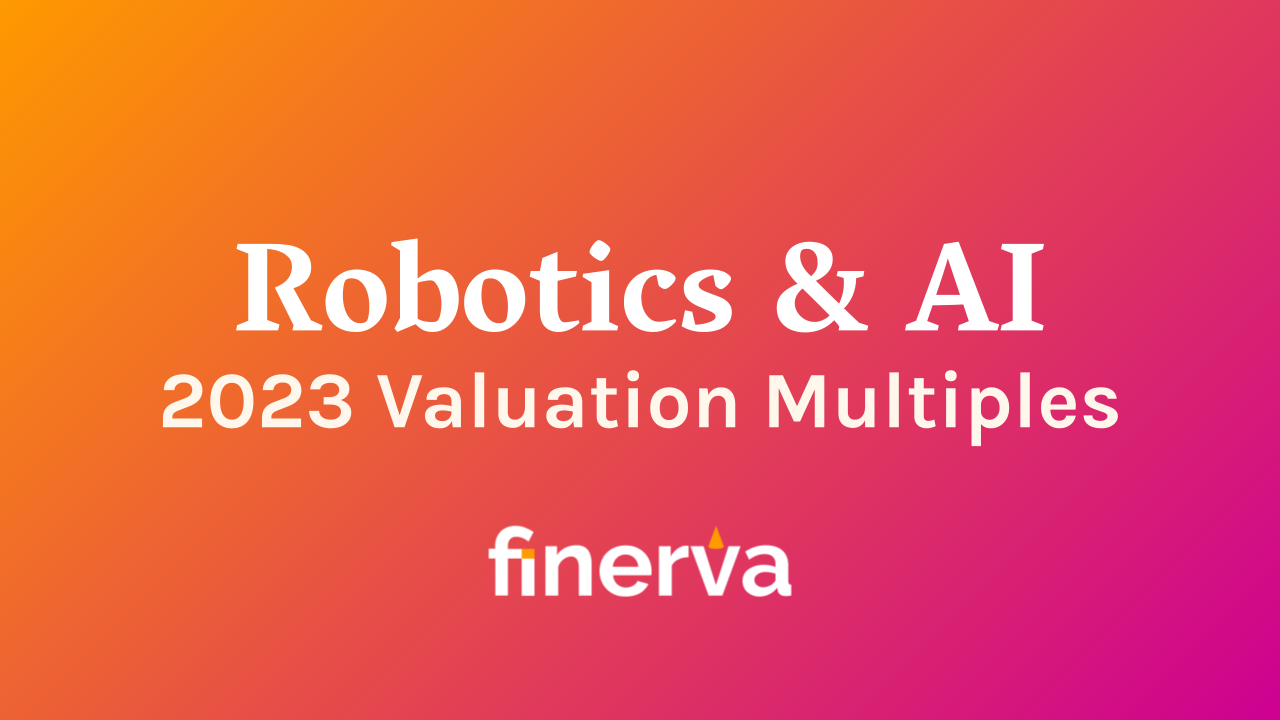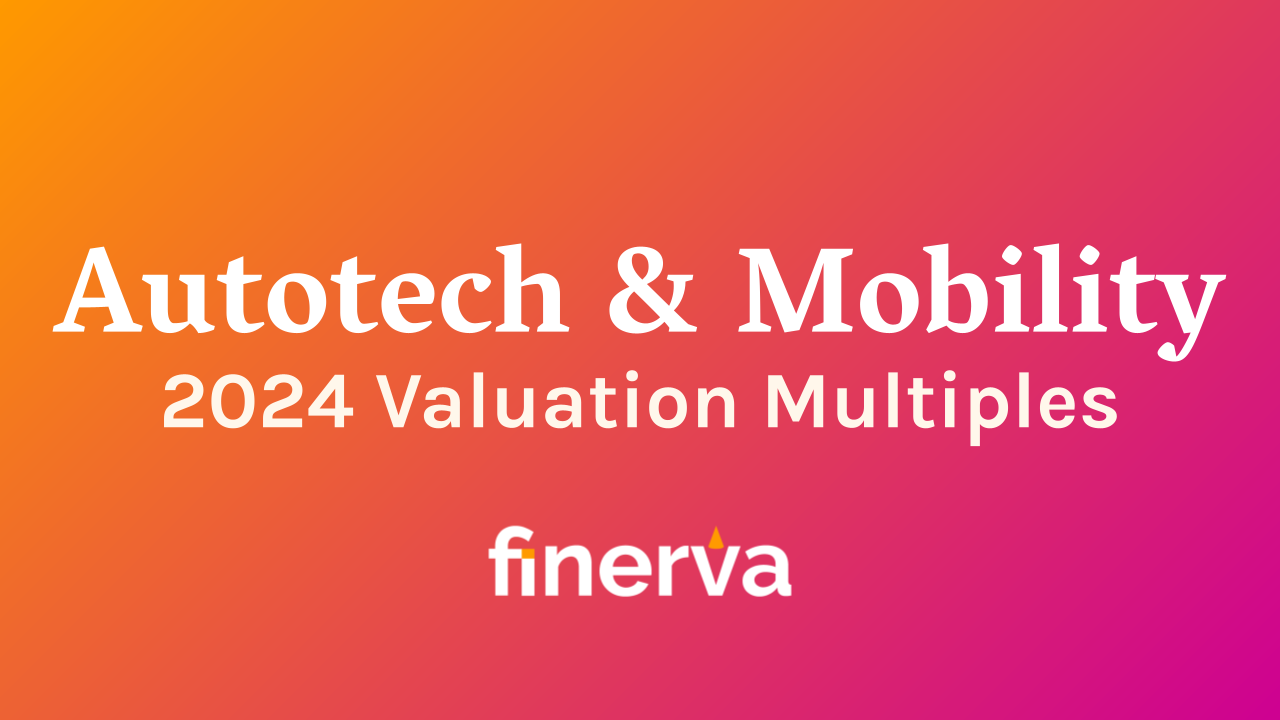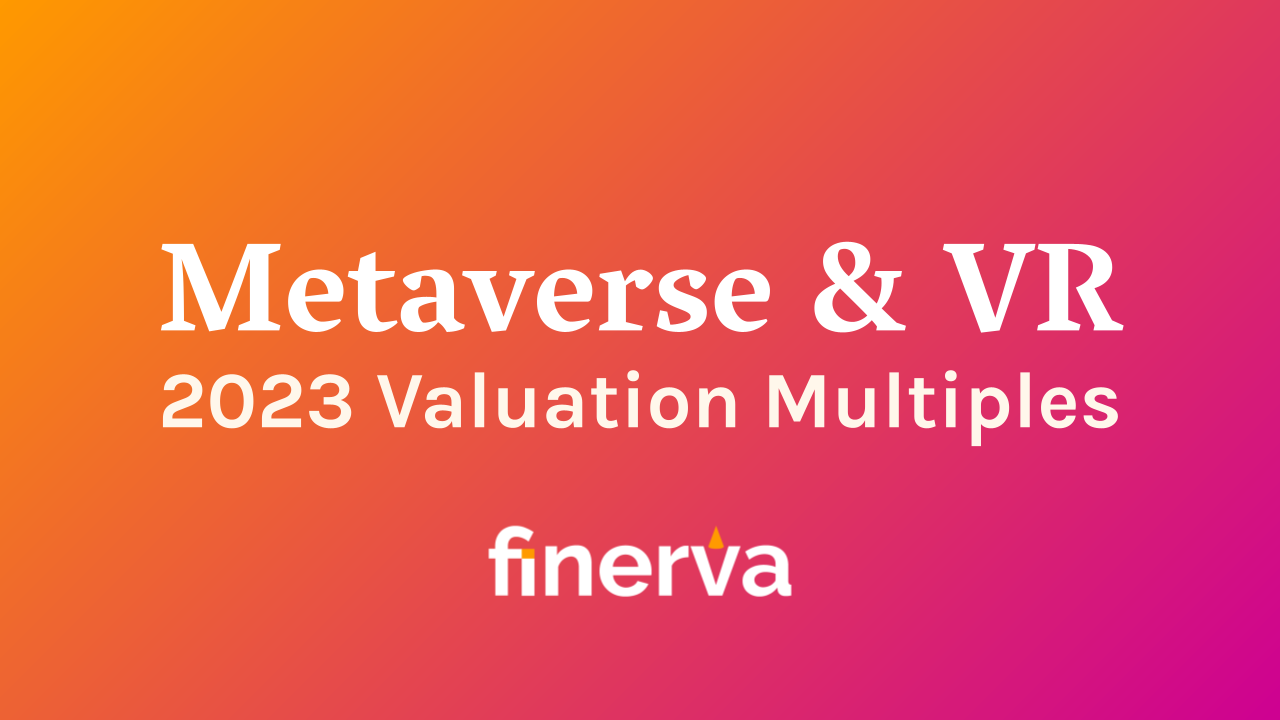Robotics & AI: 2023 Valuation Multiples

The words Robotics and Artificial Intelligence were relegated to the sci-fi world until just a few years ago. They are now part of our everyday life, with AI powering some of the most widespread technology that populates our digital world. With the growing demand for the technology, Robotics & AI companies have become more and more valuable over the past few years.
According to Stanford University, AI companies raised a record $93bn in 2021, more than doubling the already record-setting investment levels of the previous year. At the beginning of 2022, the International Data Corporation expected the market to be worth half a trillion dollars by 2023.
Throughout last year and this one, however, one subsector of AI in particular made headlines as revolutionary both for businesses and for the public, to an extent that was unheard of in what used to be a relatively niche sector. We’re talking about generative AI.
Generative AI is the branch of artificial intelligence which focuses on the production of original content based on a machine learning model. Such content can include text, images, sound and potentially many other types of data. With the release of ChatGPT in the fall of 2022, generative AI nearly monopolised global tech and business media.
In June 2023, McKinsey estimates that generative AI could add between $2.6 and $4.4 trillion to the global economy, by allowing unprecedented improvements in productivity across a number of use cases that has been growing steadily since the sector’s inception.
However, this innovation has not come without its drawbacks. Artificial Intelligence, and generative AI in particular, have come under fire for lacking a reliable control system for data security, transparency, and overall ethical implications, which greatly hinder its adoption over large scale—especially for business purposes.
Harvard Business Review has covered the subject in depth over the years, most recently outlining their risk management best practices when it comes to generative AI, with their guidelines encompassing five main topic areas:
- Accuracy
- Safety
- Honesty
- Empowerment
- Sustainability
While software companies tend to use the term AI more loosely, Robotics—and industrial applications of robotics in particular—have more precise measures to compare the efficiency of artificially intelligent robots versus humans.
According to Tianhao Zhang, co-Founder of Covariant—an AI Robotics start-up that raised an $80m Series C in 2021—”the real-world efficacy of the software “brain” powering the robot can vary, and assessing this new technology is complex,” but a good analysis should be based on the robot’s autonomy, its adaptability to changing conditions and its learning speed.
Thanks to proven efficiency results and the necessity created by staff shortages and supply chain disruptions, adoption rates of robotic solutions for industrial purposes is skyrocketing, and so is the company value of their manufacturers.
The Global X Robotics & Artificial Intelligence ETF (BOTZ), managed by Mirae Asset Financial Group, “seeks to invest in companies that potentially stand to benefit from increased adoption and utilization of robotics and artificial intelligence (AI), including those involved with industrial robotics and automation, non-industrial robots, and autonomous vehicles.”
The 36 companies in the fund are all listed on public stock exchanges, and so their financial metrics may differ from younger start-ups introducing innovative technologies, typically considered a high-risk-high-reward investment.
For example, Dealroom.co estimated Covariant’s valuation between $320m and $480m on an estimated annual revenue of about $10m. This would imply a Revenue multiple between 32x and 48x, which would place it in the top 10% of the cohort analysed in this report.
Similar to Covariant, other private start-ups in the field of AI and Robotics will be priced according to their potential, rather than their latest financial data. However, analysing the revenue and EBITDA multiples of their public counterparts allows us to establish a benchmark that can be useful to infer the valuation of a private company.
Robotics & AI Valuation Multiples
Revenue multiples for Robotics & AI companies grew throughout all of 2020 and peaked halfway through 2021, tripling from 2.2x in Q1 2022 to nearly 6x in Q3 2021. Multiples then hovered around the 5x mark until mid-2022, when they saw a steep decline likely due to the adverse macro environment.
In Q4 2022 the median EV/Revenue Multiple for AI & Robotics companies was 2.5x—just above pre-pandemic levels—showing signs of a rebound from the steep downward trajectory started in Q2 2022.
Source: YCharts
The multiples are very unevenly distributed throughout the sample of 36 companies, with the vast majority of the faring below the 5x mark by the end of last year.
As the sector matures increasingly few key players emerge, being able to achieve revenue multiples over 80x in some cases, perhaps hinting at the start of a process of selection and consolidation in a sector that is only now getting over the initial hype.
Source: YCharts In the chart above, the lines indicate the range of EV/Revenue multiples in our cohorts, while the boxes highlight the Interquartile Range (IQR), which is where the median 50% of the cohort ranks based on their valuation multiple.
EV/EBITDA multiples saw a less extreme, but steadier decline than EV/Revenue multiples. Robotics & AI Companies had a median EV/Revenue multiple of 16.4x in Q4 2022. About the same as pre-pandemic level, but up for two consecutive quarters from the low of Q2 2022.
Source: YCharts
EV/EBITDA revenue multiples were also more evenly distributed than their Revenue counterparts, although with a wider range. In our sample, EBITDA multiples ranged from 5x to over 70x in Q4 2022.
Source: YCharts In the chart above, the lines indicate the range of EV/EBITDA multiples in our cohorts, while the boxes highlight the Interquartile Range (IQR), which is where the median 50% of the cohort ranks based on their valuation multiple.
The information available on this page is of a general nature and is not intended to provide specific advice to any individuals or entities. We work hard to ensure this information is accurate at the time of publishing, although there is no guarantee that such information is accurate at the time you read this. We recommend individuals and companies seek professional advice on their circumstances and matters.




